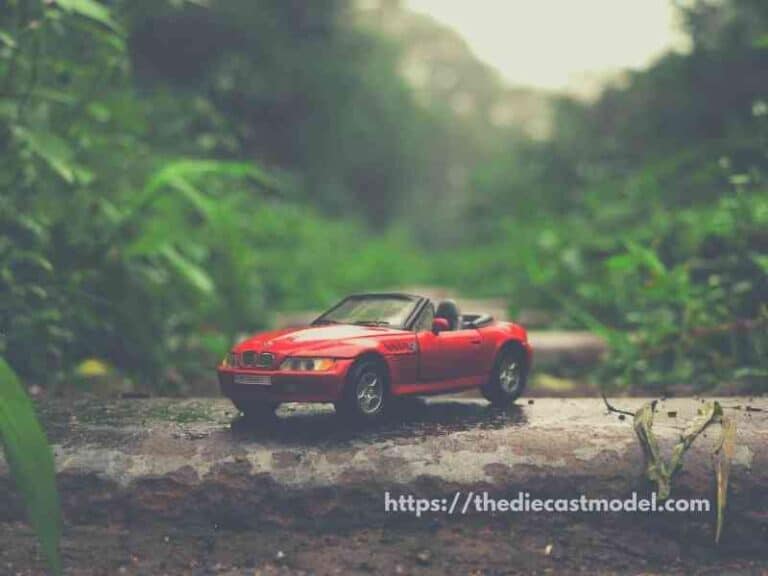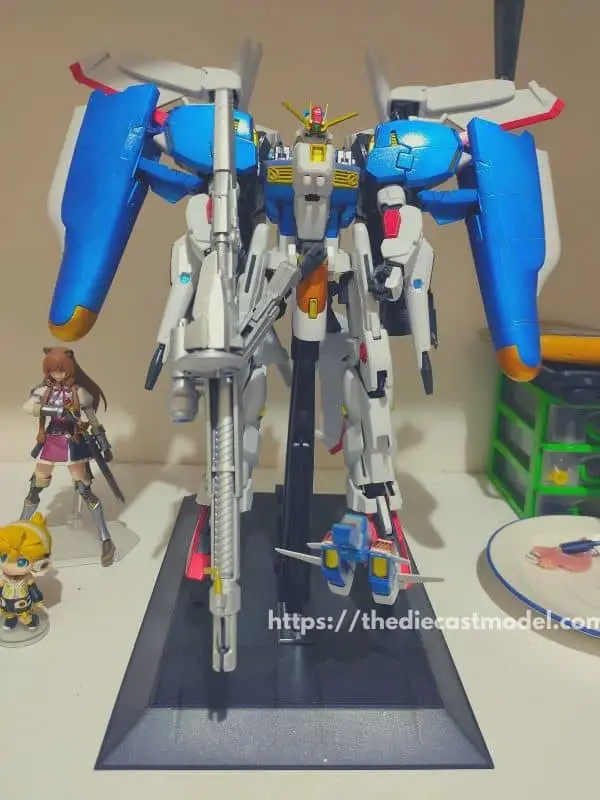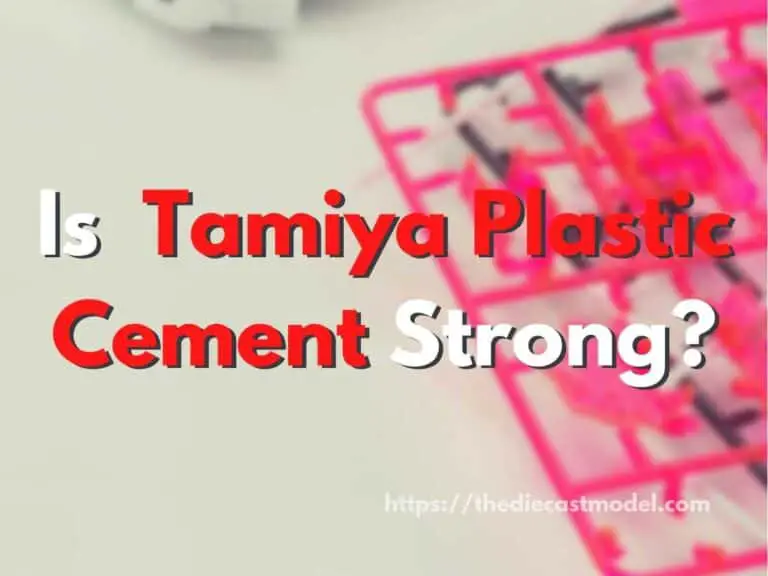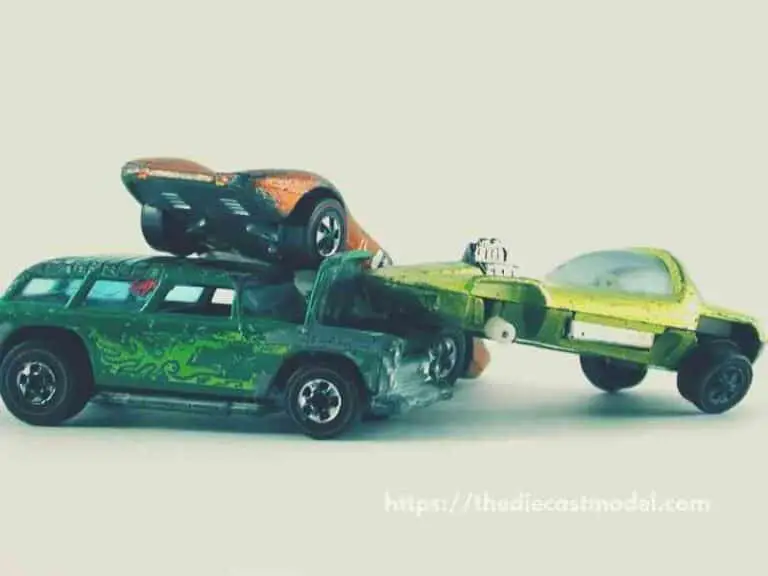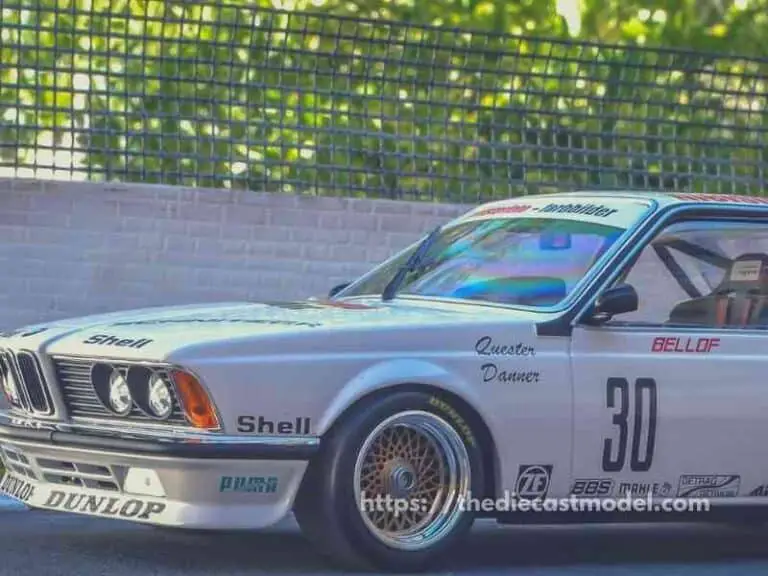Model Kit and Gluing: Do Model Kits Have and Require Glue?
One of the things new modelers ask themselves is if their model kits come with glue. The question might come from the fear of getting the wrong type of glue or saving money. However, it is more complicated than that. So, do model kits come with glue?
In general, model kits don’t come with glue. Glue or adhesives are usually bought separately from the kits. One of the main reasons why glue is not included in the box is that the choice of glue depends on the modeler’s preferences. Also, some modelers don’t use glue, especially when building easy model kits.
In this blog post, I am going to expand the summary above. Since not all model kits come with glue, we need to answer which model kits require glue? Furthermore, what glue brand and type are suitable for model building? Let’s start.
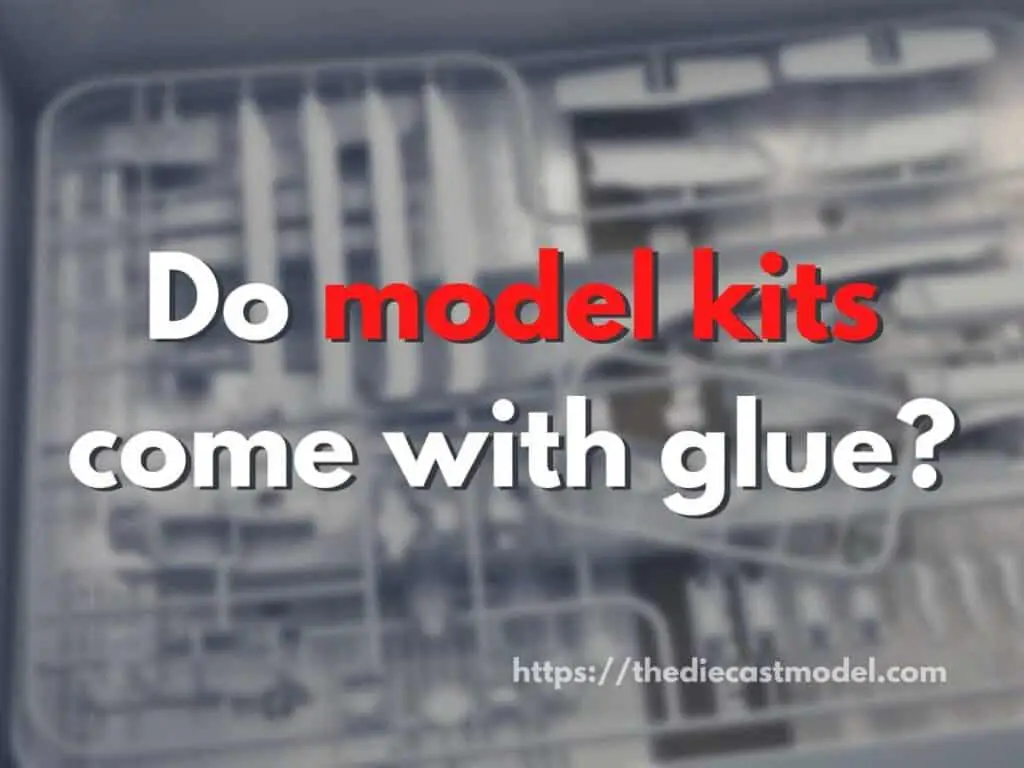
Do model kits come with glue?
Model kits consist of many small parts that you must join together to build the final product.
Modelers use glue to make these joined parts sturdy.
Plastics, metal, and wood are just a few of the materials used in the kits sold at hobby shops.
Most of the time, you will need glue, screws, small nails, or a mix of the three to assemble the model.
Most model kits will also need to be painted to look like they do on the box.
Plastic model kits are among the most popular model kits loved by both children and adults.
The most common plastic-molded kits produce scale models of cars and trucks, ships and boats, military vehicles and figures, and airplanes.
These models usually don’t come with glue. However, some might.
The main reason glue is not included in the kit is that modelers usually have their preferred brand for their glue.
If brands include their glue with their models, it might cause an increase in kit price. Furthermore, because of the modeler’s preference, glues are usually thrown away from the kit.
That’s why most kits don’t include glue in their boxes.
Since model kits usually don’t have glue inside, we need to determine if the glue is required when building model kits. That’s what we’ll talk about in the next section.
Do model kits require Glue?
Not all model kits require glue because some kits are designed to be built without any adhesives. Generally speaking, beginner model kits are straightforward, and glue is not necessary. However, some modelers still use glue on these models to increase their sturdiness.
While the majority of model kits require glue, some basic kits don’t need one. Thus, careful attention to the model kit’s instruction is necessary.
Most model kits come with a difficulty level. In this blog post, I am going to share Tamiya’s difficulty level.
Generally speaking, Tamiya’s ability level 1 models don’t require glue since they designed the models to be very easy.
Here is a table summary of Tamiya’s ability level.
| Ability Level | Number of Pieces | Ease of Assembling |
| Ability Level 1 | About 10-30 pcs | Easy Snapping, Requires no Gluing |
| Ability Level 2 | Less than 100 pcs | Easy Snapping, Requires Gluing |
| Ability Level 3 | More than 100 pcs | More Detailed Parts |
| Ability Level 4 | About 100 to 200 pcs | Extra fine and delicate parts |
| Ability Level 5 | About 200 to 1000 pcs | For Master Modelers, have delicate and moving parts |
As you can see in this table, glue is unnecessary if the model kit you have indicates “Ability level 1”.
Note that different brands have different ways of indicating the difficulty of the model. However, the general rule is the easiest kits don’t require gluing.
Model kit brands such as Revell, Airfix, and Aoshima have their way of indicating the difficulty of their model. So always check the label when buying.
Furthermore, the best way to build models is always to check the instruction manual. If the manual says that glue is necessary, then use glue. If not, then you can create the model without any glue.
But if you’re serious about becoming a modeler, plastic glue is one of the necessary tools you should have at any time at your disposal.
Don’t worry because I am going to share some glues you can use later.
Thus, plastic glue is the must-have supply for model kits.
Glue, which is used at every step of every project, is not only the most popular commodity in the hobby sector, but it is also something that every modeler has a strong preference for.
Many people have favorite brands or types, while others are unsure where to begin.
Your skill level, project, and patience should determine the glue you use for glue setting time.
Here are some of my picks for the plastic model glues you can use in model building:
1. Tamiya Extra Thin Cement
Tamiya Extra Thin Cement is among the widely used hobby glues.
It is always in stock and is considerably easier to use than other powerful plastic welders.
Tamiya’s extra thin cement is not as strong as a bond compared to Tamiya’s regular cement. Still, it is easier to work with and is better suited for novice and intermediate modelers.
Personally speaking, I always use Tamiya cement when building model kits. However, some modelers prefer other brands, so feel free to use what you think is good for you.
For a guide on how Tamiya plastic cement works, feel free to check this blog post: How does Tamiya plastic cement work?
2. Plastic Model glue by Testors
Testors’ basic plastic model glue is a must-have item on any modeler’s workbench.
Any pro modeler in the world will almost certainly have a tube of this lying around.
Although not ideal for advanced projects, Testors’ 3501 plastic glue is a low-cost tube of glue that you can apply for various purposes in plastic modeling.
3. Insta-Cure Super Thin 1/2 oz. CA Glue by Bob Smith
Bob Smith’s Insta-Cure Super Thin 1/2 oz.
CA adhesive has a water-thin viscosity that capillary action binds pieces and cures in seconds.
The parts must be held together securely while the glue sets because the adhesive is designed to be used on tight-fitting surfaces.
Bob Smiths’ CA glue works well on balsa and other wood materials in addition to plastic models.
4. Space Age Plastic Welder by Tenax
Tenax 7R, one of the most sought-after plastic welders in the hobby market, is often hard to come by.
Tenax is the glue of choice for many modelers because of its fast setting time and permanent seal once dry.
Just be careful — if it drops at the wrong spot, this strong glue can melt that spot in no time.
I also like this glue, but I prefer using Tamiya’s plastic cement because they’re hard to get by and remove.
5. Bondic Liquid Plastic Welder
Bondic is one of the most innovative glues on the market today.
Bondic glues, fixes, and fills anything in a matter of seconds.
This is quite unique because this glue uses led lights.
Using a small LED light, Bondic Glue hardens and adheres to any surface it is applied to.
While Bondic is commonly used in domestic applications like sealing pipes, repairing fences, and other DIY projects, Bondic’s usefulness to modeling is a quick patch from small to tough portions that would otherwise be impossible to apply.
Although, I only recommend using this glue for experienced modelers.
6. Plastic Weld 2 oz. Bottle by Plastruct
Plastruct’s 2 oz. Plastic weld dries quickly.
The cement sets permanently overnight after setting in only a few minutes.
To properly attach and bond each side, the specific formula dissolves a small layer of the surface on which it is put.
Capillary motion spreads the cement throughout each joint when applied with a tiny brush or syringe.
I also tried this product, and they work really well. A beginner will like using this glue since it sets within minutes.
The common problem I see with Tamiya’s extra thin cement is it sets in only 10 seconds, which means if you make mistakes in the gluing process, it is quite a pain to change.
However, you can opt for the Tamiya regular cement, which will work the same as this glue.
7. Roket Plastic Glue 30 ml by Deluxe Materials
Deluxe Materials’ Roket Glue in a 30-milliliter container is non-toxic and non-flammable.
This low odor glue joins plastic in about ten seconds with a fine non-clog tip, bonding styrene, plastic card, and more.
Deluxe’s Roket Glue, which is water washable, is one of the most recent and technologically advanced plastic glues on the market.
I like this glue. It is non-toxic and non-flammable, which is a significant upgrade from ordinary plastic cement.
I talked about the safety levels of Tamiya cement in another blog post. So here is the post: Is Tamiya Cement Safe?
8. Revell Contacta Professional Plastic Glue
Aside from Tamiya, Revell has their plastic glue.
Their mode of action is the same as Tamiya plastic cement. Revell Contacta also melts and welds plastics together.
To make the best out of Revell Contacts, make sure to use it for polystyrene plastics because it works best on those types of plastics.
As a caution, this glue, like some other glue written here, produces fumes. Thus, it is a good idea to use it in well-ventilated areas.
What glue do you need for model kits?
If you have been involved in building scale models for a long time, you’ve probably developed your own set of go-to glues and epoxies that have aided you in finishing your favorite projects.
But, if you’re a beginner or have grown tired of your “go-to” adhesive, here’s a quick overview of some alternatives.
1. Polyvinyl Acetate (PVA) Adhesive
PVA, a common water-based domestic and commercial glue, ideally suited for dioramas or landscaping, can be applied to a broader surface.
While Polyvinyl acetate glues have a lesser hold than transparent adhesives, it is a quick and easy way to add more minor features to a display, such as grass or stones.
They are also simple to remove if you make a mistake.
2. Aliphatic Glue
Aliphatic glue, often known as wood glue, is similar to PVA but soaks into joints deeper and thus makes a stronger bond.
Aliphatic glue is also highly water-resistant and sand-proof, plus it sets faster than PVA.
It is ideal for attaching wood to wood, as implied by its common name.
3. Canopy Glue
Canopy glues are ideal for gluing plastic to plastic and have the bonus of being easy to apply and have a clear finish, which means no nasty white markings on your model pieces once the glue has dried.
While the bond isn’t firm, it’s a helpful tool for smaller projects.
4. Super Glue or Cyanoacrylate (CA)
Modelers use this adhesive a lot since it works well for combining metals and gluing metals to plastic.
Because this dries quickly, more care should be given when lining up parts to avoid a problematic fix later.
Avoid getting super glue on your skin, as your fingers and thumbs establish a loving bond if you’re not careful.
For a comparison between plastic cement and super glue, check this blog post: plastic cement vs. super glue.
5. Epoxy Resin
Epoxy resins are a two-part glue consisting of an adhesive and a hardener that can bind practically any two surfaces together.
Mixing epoxy resins are required before use, and the drying period will be slower than with superglues, but some faster mixes are available.
The result is a firm bond, but it is less used for scale model building because of the mixing, hardening time, and general mess.
What’s next? If you want to know if you should paint or glue models first, you may find my other blog post interesting: Do you paint or build models first?

“Only the things I love”
thediecastmodel.com is reader-supported. When you buy through links on the site, I earn an affiliate commission.
So, here are the things I love when taking care of my Diecast Models.
Cleaning the Models
The first we are going to talk about is cleaning the models.
Removing Dust
- Air Brush – For me, this is the best since it not just removes dust but you can use it in painting/clear coating.
- Air Duster – This is a good alternative to Airbrush
- Normal Brush – If you are short on budget, you can use a normal brush. However, make sure that the brush has soft bristles because there are some hard brushes than can cause scratches. That’s why I recommended a good brush that can do the job properly.
Cleaning and Shining Hacks
Well, here are some of my cleaning hacks for removing scratches, oxidation, and so much more.
- Removing Decal Adhesive – Use Goo Gone on those hard-to-remove decal adhesives. It works fast and works like charm!
- Waxing and Polishing – Here is something a lot of people don’t know. Waxing protects the clear coat and paint while polishing shines the model. Instead of buying it separately, use a 2 in 1 to save money. Get this instead.
- Beginner Wax – The wax I recommended earlier is good and provides the best results based on my experience. But a beginner might have a problem especially if they’re not good at applying wax. Solid wax reaching hard to reach surface can be hard to remove. You have two choices here. One is to use a qtips to reach those surfaces, another is to use a liquid wax I recommended.
- Cleaning Wheels, Rubber, Plastic – Do not forget that rubber and plastic surface are quite different, especially in the cleaning process. Just wiping it down won’t do the job. That’s why I use Meguiar’s Vinyl and Rubber Cleaner and Conditioner. Works like charm!
- Make the Wheels Shine! – Making our models look good won’t be complete without tiny details such as shiny wheels! Do not forget this because however small this is, the difference can be as big as night and day.
- Remove Scratches Easily – Tiny scratches are not the end for your model. Here is a simple trick I’ve been using to make my models look scratch-free even without repainting. Use T-Cut.
Painting the Models
Painting Tools
Make sure when you paint models, have these ready.
- Tape – A tape is important if you are painting a straight line. Furthermore, it will prevent your paint to scatter on other parts. I recommend Tamiya Tape since it is really made for models. Furthermore, they stick really well preventing paint splatters.
- Brush (Beginner) – Find a good set of brushes to paint your models. Of course, you can opt for an airbrush but it’s quite expensive.
- Airbrush (Intermediate/Expert) – This will yield a significantly better result than an ordinary brush because you can easily spray the paint evenly. I recommend this if you know what you’re doing.
- Stand(Optional) – Stands are good because it can be hard to manually hold the models while painting. It is optional but in my opinion, the price is well worth it for the comfort it gives.
- Drop Cloths – Drop Cloths will protect your surroundings from the paint.
- Primer – The most common beginner mistake I see is painting models without any Primer. A primer will prevent imperfections such as bubbles or paint not sticking to your models. It is a small price to pay for quality results.
- Clear Coat – A clear coat will protect the paint of your models. This will make the paint last longer. Also, it is the one responsible for making your models shine.
Paints
Of course, you can’t do painting properly without paint. So here are the ones I recommend.
- Acrylic Paint – Good for beginners because it dries quickly. However, it doesn’t produce results as good as enamel paint.
- Enamel Paint – Provides a good quality finish and longer-lasting paint. However, it takes longer to dry and requires expertise to use.
Model Maintenance
Model Storage
- Simple Wood Cabinet – While it doesn’t let you display your models, wooden cabinets are good storage for these models. For one, they are not heat conductors which means that the temperature inside will remain constant and remain cool. Furthermore, they prevent light from reaching the models which can cause oxidation.
- Clear Cabinet with Lock – If you want to display your models, then I recommend this. It closes so dust won’t easily get to your models. I also recommend you don’t put more than 1 model in each compartment since metals are good conductors of heat.
Model Photography
So you want to show off your models to others? Well, I got you covered.
Here is my beginner-friendly model photography tutorial that teaches everything from taking pictures to the editing process.
You will also see me doing hands-on photography in that tutorial.
Here is the link: How to Take Pictures of a Diecast Model or Model Kit | Helpful Illustrated and Video Guide

